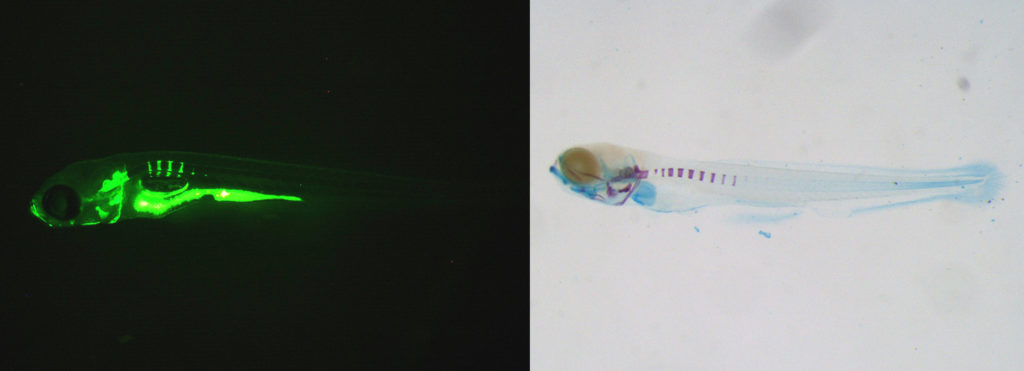ZEBRAFISH LAB
Director: Dr. Massimo Mariotti
Research Topics
TOPIC 2: Research of new compounds with effects on bone metabolism through large-scale drug screening (embryo) and small-scale drug screening (adult - scale model).

Unlike other traditional animal models, zebrafish represents a versatile way to approach the study of the skeleton. zebrafish offers two different faces, or better, two models in one animal: larval and adult stage. In turn, both models offer different solutions and applications for basic science studies, translational medicine, physiopathology studies and drug screening. The transparency of zebrafish embryos allows researchers to keep monitored the internal organs in a way that is not possible in other vertebrates. In addition, small size (1mm of length), wide genetic characterization, external and fast development and low maintenance cost makes zebrafish embryo one of the most powerful and emerging animal tools. The transparency of the zebrafish larva lends itself to the use of vital dyes since they are non-invasive staining methods. Vital bone dyes, like calcein (topic2_image1), can be administrate to the fish water and rapidly penetrates into zebrafish embryos binding to calcified structures. Other dyes like alcian blue (often used in co-staining with alizarin red topic2_image2) are used to visualize cartilage matrix on fixed samples. Because of these characteristics, the zebrafish might also provide opportunities to accelerate the process of drug discovery concerning human bone diseases.
However, bone turnover, reparation and remodeling of the adult bone tissue cannot be found during embryo development because the fish, at this stage, does not possess mature bone. Therefore, the adult zebrafish represents an important resource to analyze bone metabolism and turnover. Adult bone shows similar properties to human counterpart, suggesting that it may be used with success as a model to screen new drugs and design new therapies against human bone diseases. The creation of pathological models of human bone diseases in zebrafish and the non-invasive scale analysis can facilitate the drug screening approach.
